The debate over scale in solar power is raging these days. Advocates of large-scale solar argue that its lower cost per unit of electricity delivered make it a natural choice, while champions of distributed generation emphasize avoided costs, citizen ownership and engagement, local economic benefits, and many other advantages. In California, the recent Energy Commission ruling that all new homes must be constructed with solar power, tackled exactly this argument.
Last week, the Institute for Local Self-Reliance (ILSR) published its second annual State of Distributed Solar and found a considerable difference between the scale of solar power in the Northeastern United States, versus most of the rest of the country.
The group found that of states with more than 100 MW of solar deployed, 32, mostly northeastern ones, including Pennsylvania, New York, Massachusetts, Delaware, Maryland, New Jersey, Vermont and Connecticut – had a majority of their solar power come from projects less than 1 MW (~five to eight acres) in size. This is in contrast to large solar markets in the rest of the nation, including the large solar markets of California, North Carolina, Texas, Florida and Nevada, which saw more large-scale development.
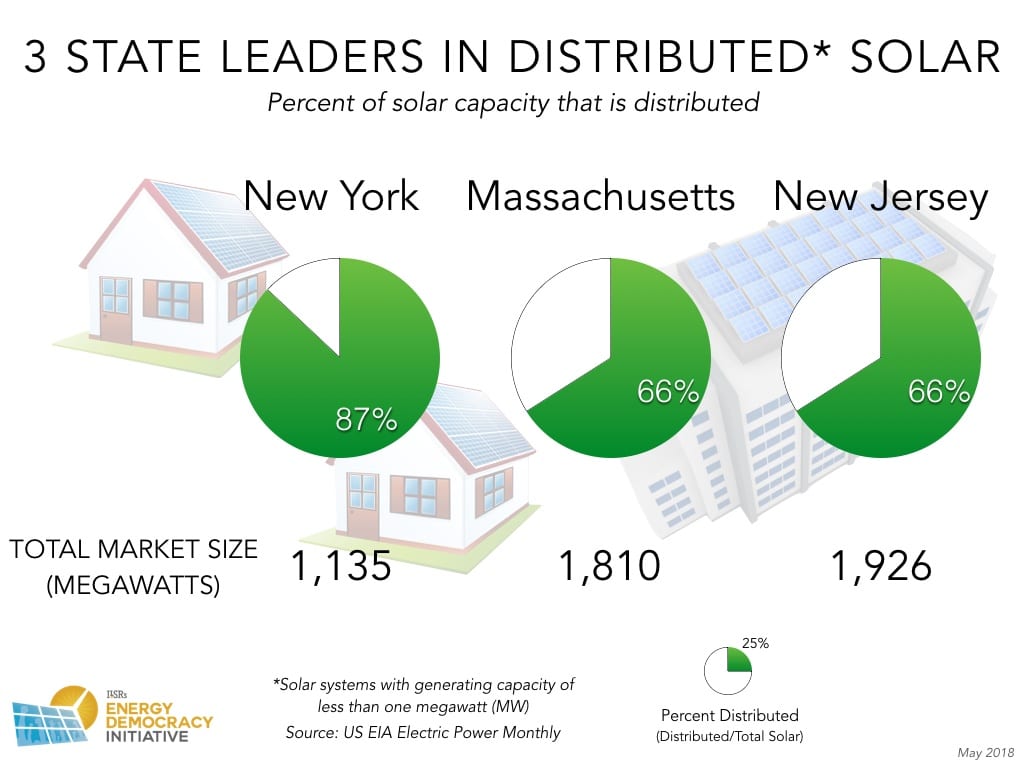
ILSR suggests that a majority of this is policy-driven, as the result of net metering and power purchase agreements being protected. This tells only part of the story, as California has arguably the best policy support for solar in the United States, only around 41% of its solar power is distributed. Obvious other drivers of this pattern exist: large swaths of cheap land to build large-scale solar projects on, and less local resistance to large-scale projects in less densely populated areas.
One area in which small solar power dominates is job creation and local economic benefits. Maryland’s recent Value of Solar report suggests that some small scale solar power installations are worth greater than 42¢/kWh in economic value when accounting for not only the electricity generated, but the jobs and economic activity.
Of course, this job creation comes with a higher cost per kilowatt-hour, which the solar industry is working doggedly to lower, in order to lower what end-users pay for the electricity. And here we see numbers evolve and the answer gets a little more complex.
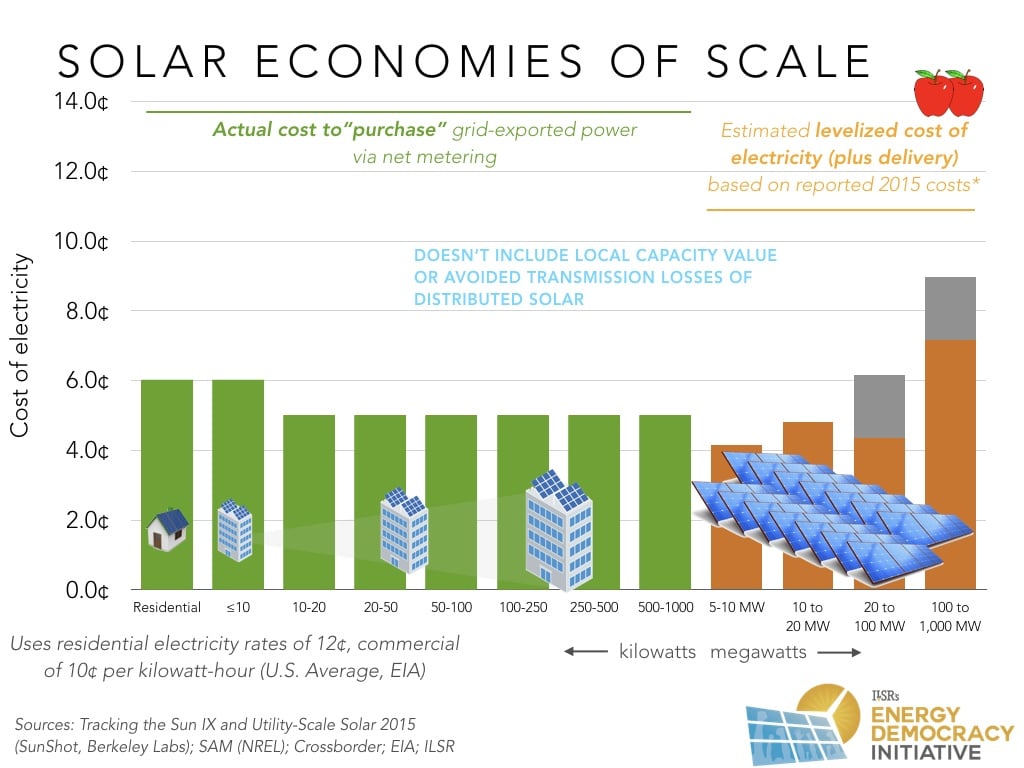
For instance, right now, residential solar power – if you pay cash for it – is among the cheapest electricity you can buy in the United States. The report above shows that rooftop residential and commercial solar power delivers electricity at 6¢/kWh and less, but you can’t buy that in the market.
And if we’re going to talk solar power at time of construction – 2.5¢/kWh is coming to California residential installs.
There is also the broader issue of what it costs to connect these large solar power plants to the power grid, and to deliver power over long distances. In an earlier report by the ILSR, the interconnection costs of these large plants shows a continuous increase in the service areas of California’s large IOUs.
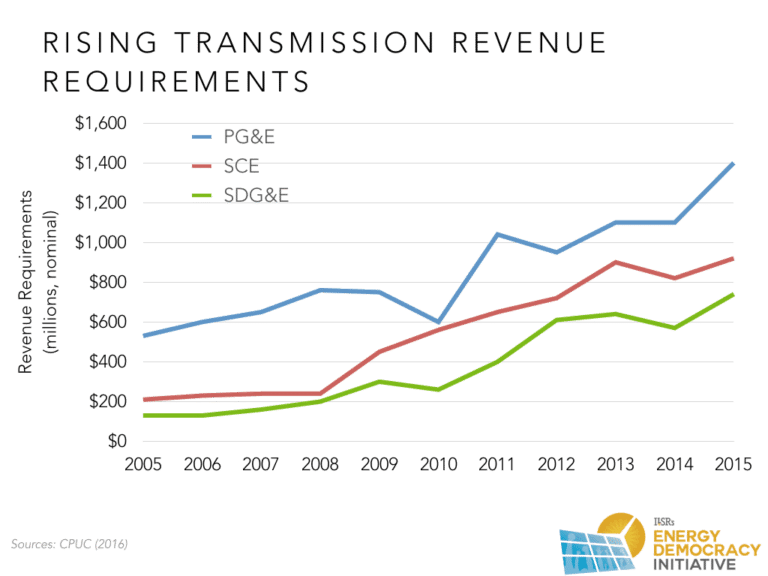
Of course, distributed energy knocks back billions worth of those upgrades.
In the end, it will be essential to embrace solar at all scales. The utility scale developers are driving innovation and pricing as they focus on cutting costs, and these large installs are the only kind of solar capable of feeding dense populations in urban regions.
However, as corporations driven by short-term profit and in many cases protecting monopolies, electric utilities have shown time and time again that they are fundamentally stuck in the business models of the past. Distributed solar and other forms of generation are essential for building the political support to take on these utilities, as every citizen with solar on their roof has a concrete stake in the policies that will drive renewable energy adoption.
This content is protected by copyright and may not be reused. If you want to cooperate with us and would like to reuse some of our content, please contact: editors@pv-magazine.com.
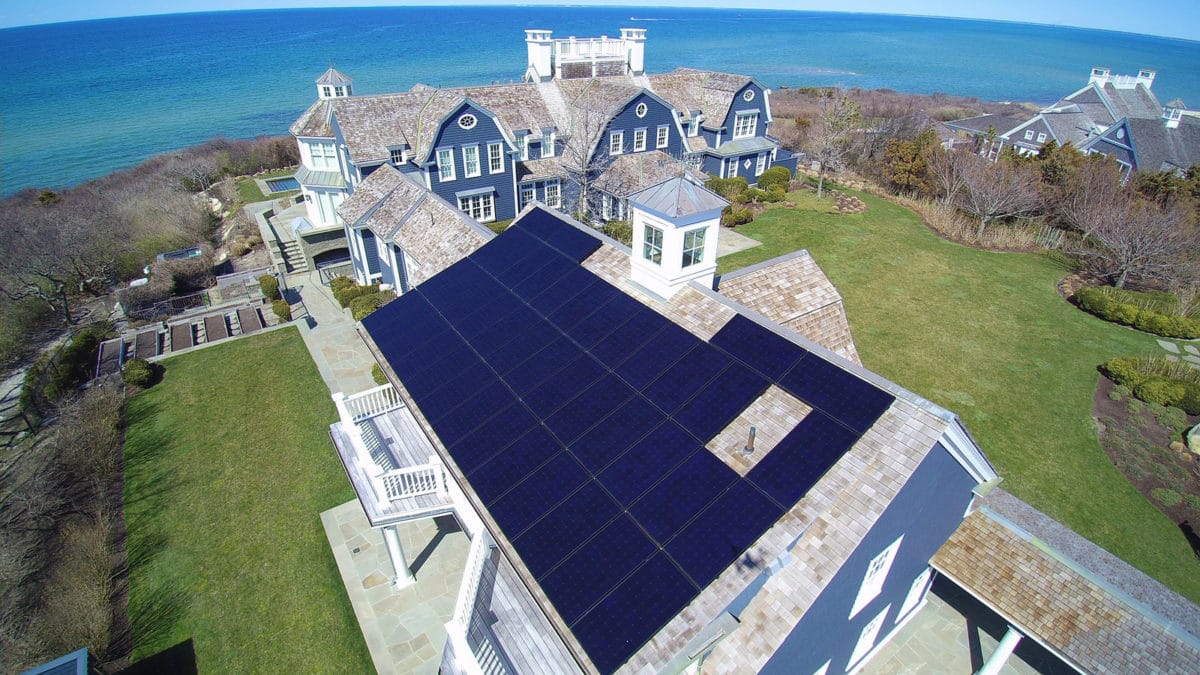




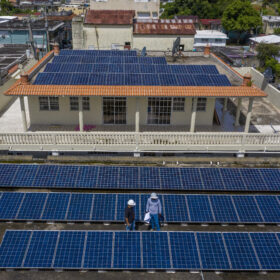


By submitting this form you agree to pv magazine using your data for the purposes of publishing your comment.
Your personal data will only be disclosed or otherwise transmitted to third parties for the purposes of spam filtering or if this is necessary for technical maintenance of the website. Any other transfer to third parties will not take place unless this is justified on the basis of applicable data protection regulations or if pv magazine is legally obliged to do so.
You may revoke this consent at any time with effect for the future, in which case your personal data will be deleted immediately. Otherwise, your data will be deleted if pv magazine has processed your request or the purpose of data storage is fulfilled.
Further information on data privacy can be found in our Data Protection Policy.